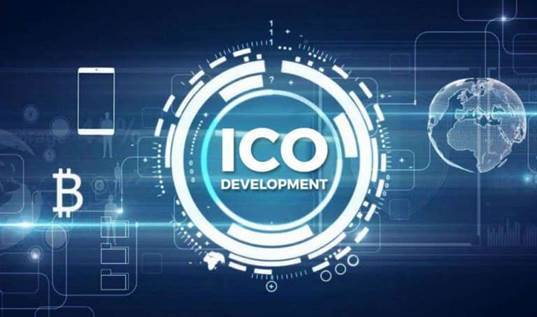Software development
Five Stage Model Of Group Development
Содержание
Mentoring is primarily the identification and nurturing of potential for the whole person. It can be a long-term relationship, where the goals may change but are always set by the learner. Feedback comes from the mentees – the mentor helps them develop insight and understanding through reflections, that is, becoming more aware of their own experiences and areas of improvement. However, coaching relates to performance improvement (often short-term) in a specific skills area.
It is important for team leader to encourage team members to bring in different opinions to enrich the work of the team. This needs to be accepted by team members without bringing their ego into play. The team members should look at these as differences on issues rather with other team members.
When two people are having disagreement their relation is intact and in conflict, the relation often turns sour and dialogue ends. Many factors in health care system can contribute to the escalation of conflict. It starts from the disagreement and once the conflict escalates the focus shifts from the issues to the person’s faults leading to expansion of problem with breakdown of dialogue. The escalation of conflict is enemy images, resulting in violence, dehumanization process leading to open hostility and polarization where co-existence is no longer possible.

The evidence suggests that quality of care, patient safety, shortage of manpower, and stress among health care professionals is managed better through an effective team work. It is an excellent and most desirable method but requires good team building and supervision. In recent days organizing primary care services for acute, chronic and preventive care is a major challenge. To handle such situations successful teams and team work always matters to accomplish the task with collaborative efforts.
Forming
The team is already accustomed to each other’s workflows, and most future disputes and conflicts generally become easier to overcome. The official team leader takes a back seat much more than in the previous stages, and the individual team members are given their chance to shine. The final stage in team development is called adjourning/transforming. This is when the team has accomplished what it was charged to do and goes through the process of dismantling itself.
Devine DJ. A review and integration of classification systems relevant to teams in organizations. Motivators would increase job satisfaction while the hygiene factors would reduce job dissatisfaction. Money as a reward would be a motivator otherwise a hygiene factor. The leader of team should focus on Job enrichment as a job satisfaction strategy when money and hygiene factors cannot be increased or no longer motivate a staff member. During the storming phase, leaders must be actively involved in managing conflict for the phase to come to a successful resolution. Team training and development are key to strengthening teams so they are equiped to accomplish organizational goals.

Now, these 5 stages are vital to help you anticipate your team effectiveness, i.e. your ability to be efficient and productive with your work, both as individuals and as a group. You’re reading an excerpt of The Holloway Guide to Remote Work, a book by Katie Wilde, Juan Pablo Buriticá, and over 50 other contributors. It is the most comprehensive resource on building, managing, and adapting to working https://globalcloudteam.com/ with distributed teams. Purchase the book to support the author and the ad-free Holloway reading experience. You get instant digital access, 800 links and references, a library of tools for remote-friendly work, commentary and future updates, and a high-quality PDF download. The norming stage of team development is when the team begins to demonstrate team skills and to work as a cohesive group.
This is an area of team formation where remote leaders will want to pay extra attention. In a formal group, people join because of some work assignment. The second phase begins when the people joined the formal group. Then these people define the group’s purpose, structure, and leadership. This stage is complete when members begin to think of themselves as part of a group.
This is useful to use as a diagnostic framework to overcome hitches when integrating remote or virtual teams. For instance, if the team developed a new work process to improve the customer experience, one of its team members may now have responsibility for overseeing that new and improved process. This stage can also mean a change in an employee’s job responsibilities and expectations. In the first stage of forming, this newly chartered group of people meets and gets to know each other. For instance, a team sponsor will ensure that the team has the budget and the staff hours available to support the project. Healthy teams foster creativity – a critical component to a thriving organization.
Five Stage Model Of Group Development
This stage of a group can be confusing and is usually reached when the task is successfully completed. At this stage, the project is coming to an end and the team members are moving off in different directions. Questions around leadership, authority, rules, policies, norms, responsibilities, structure, evaluation criteria and reward systems tend to arise during the storming stage.
Teaming: what is it and why is it important? – People Management Magazine
Teaming: what is it and why is it important?.
Posted: Mon, 11 Jul 2022 07:00:00 GMT [source]
Buy it now for lifetime access to expert knowledge, including future updates. Some people might not be comfortable sharing the details of their personal spaces. It’s important for companies and managers to respect those boundaries as well. This is a time of celebration and recognition for a job well done.
Building And Leading Teams
The role of the leader is to ensure that these differences are dealt with in a healthy manner and do not lead to conflict. Conflicts stages of group formation are disagreements that lead to tension within, and between people. Often people are confused between conflict and disagreement.
Working in a team or group is a complex process characterized by 5 distinct stages. It’s best that you use each stage to learn and understand something new about your teammates and work on improving your workflows. Then, use this knowledge to help you overcome problems and reach your project goals with success. The stages of group development in organizational behavior and management are a theory of team development — a group-forming model that consists of 5 distinct stages. A team cannot be expected to perform well right from the time it is formed. It takes time, patience, requires support, efforts and members often go through recognizable stages as they change from being a collection of strangers to a united group with common goals.
If conflict is not controlled early, it can have damaging effects in the workplace, stifling the growth of departments and deflating employee morale. Mentoring and coaching skills are a must for leaders and managers. In formal education of health care professionals, mentoring is considered as a fundamental tool for helping people achieve required competencies. Formal and informal mentoring has been increasingly encouraged as a way of supporting people’s continuing professional development.
- While, others may be sad over the loss of camaraderie and friendship.
- You’re reading an excerpt of The Holloway Guide to Remote Work, a book by Katie Wilde, Juan Pablo Buriticá, and over 50 other contributors.
- The teamwork can significantly reduce workloads, increase job satisfaction and retention, improve patient satisfaction and reduce morbidity.
- Groups rely on social cues to move from one stage to the next, and the lower the amount of social interaction, the more difficult it is for team formation to progress.
- Borrill C, West MA, Shapiro D, Rees A. Team working and effectiveness in health care.
They respect and acknowledge each other’s skills, talents, and experience. However, this stage is crucial if you want your team to succeed — you won’t get far with your project by sweeping vital questions and potential problems under a rug. Tuckman would later go on to say that his group-forming model gained such popularity because the names of the first 4 stages formed a perfect rhyme — considering that they all end in “ming”. The first 4 stages of group development are also known as the “Forming-Storming-Norming-Performing Model” — they were established by Bruce W. Tuckman, an American Psychological Researcher, in 1965. Once a group is clear about its needs, it can move forward to the third stage of group development, the norming stage.
Its members respect and trust each other and strongly believe that every member brings unique skills and strengths to the team and the right competitive spirit to bring the best contribution. However, the structure of team differs depending upon its purpose, its task, its setting, the mix of professions and the formal relationship between health professionals in it. The team based practice is well understood only when the distinction between team, team work, collaboration and collaborative practices is known. In developed countries the teamwork and collaboration in healthcare delivery has been discussed in government reports as a key strategy in health care renewal.
A team that doesn’t go through the ‘storming’ phase will not reach the levels of open debate and trust that characterizes ‘performing’ teams. When group members get to know each other better, the storming stage begins. This storming stage named because of the intragroup conflict that occurs over who will control the group and what the group needs to be doing.
Adjourning
The first stage of group development is the forming stage. This stage presents a time where the group is just starting to come together and is described with anxiety and uncertainty. Bruce Tuckman presented a model of five stages Forming, Storming, Norming, and Performing in order to develop as a group. The link between the management of employees and patient mortality in acute hospitals.
The teams do not necessarily pass through the above mentioned stages and stay in the stage reached but keep moving back and forth. The various factors, such as, new member join and current members leave, new tasks are assigned, the leadership changes etc keep the teams moving back and forth among various stages. Team work has shown improvement in performance in many aspects of healthcare in primary health care and public health systems.
June is approaching, and the vegetable garden is almost fully-grown. And, what’s most important, they trust that everyone involved will do their share of the work. They know exactly which team member to call to help with each type of problem that arises in the project. They’ve polished out most questions and bought everything they need.
Delegate tasks appropriately, and according to the skills, experience, and interests of individual team members. Clarify the expected stages of group development right from the start, to highlight that conflicts and problems throughout the project are normal, and not a sign of failure. Bear in mind that not all teams reach this stage — some may falter at the earlier stages, due to the inability to properly address differences between team members or address problems as they emerge.
Managing Conflict In Remote Teams
Sometimes, subgroups may form around particular opinions or authority figures — which are all clear signs that team cohesion has not happened yet. A general idea of what types of vegetables they could grow is forming and includes tomatoes, cucumbers, zucchinis, and peppers. At the last moment, Daisy also suggests they grow 20 sq feet of broccoli.
